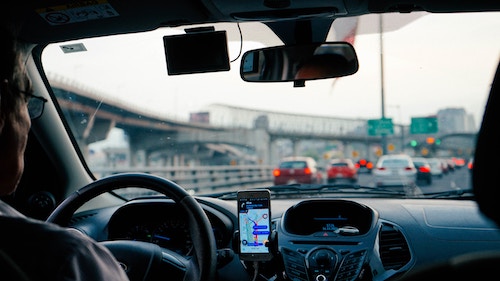This article was originally published by Inc. on June 21, 2016
In giving passengers shared responsibility for the customer experience, Uber put the passenger in the driver’s seat and changed on-demand services.
It’s easy to talk about all the ways Uber has screwed up. It also makes sense to talk about them: the sexual harrassment, the bullying of public officials and the outlaw gestalt, the culture that encouraged so many inappropriate behaviors and beliefs, the leadership failure that has now climaxed with the resignation of the founder (and still majority shareholder) Travis Kalanick, which wasn’t stanched by the departure of so many high-level execs — a title does not a leader make — and won’t end just because Uber finds a new CEO. Scourges that flourish in the dark are more likely to wilt when a bright light is shined upon them–and a scouring pad taken to them.
But it’s also worth noting that some things that Uber has gotten right — indeed, to celebrate Uber’s genius in service design: a sense that customers and drivers share a responsibility for co-creating the experience, portability, and visibility.
Instant Gratification
A customer’s ability to summon transportation with a few taps on an app has become the gold standard in our are-we-there-yet on-demand world. You can’t beat the satisfaction and convenience of a car showing up in just a few minutes, wherever you are or wherever you are going. Even Amazon, which patented one-click checkout, feels it must play catchup with Uber when it comes to delivering packages.
Service design and delivery have to go together. A design that can’t be executed is meaningless, and if delivery of a great customer experience is a happy accident rather than the result of intent, it won’t have the reliability, repeatability, scalability, or profitability that businesses need. It’s worth noting, of course, that those responsible for delivering the customer experience at Uber are the drivers, with whom Uber has an arms’-length relationship at best.
Here’s hoping that as Uber looks to fill jobs not just at the senior executive level but throughout the organization and change its culture for the better, it manages to preserve these things that make for a great customer experience:
Co-Creation
The idea that the customer and the service provider have shared responsibility for the customer experience is an important aspect of service design. The fact that customers not only rate Uber drivers but are themselves rated by the drivers is humbling, an incentive to be on one’s best behavior, and ultimately very fair. Why should passengers be able to get away with keeping drivers waiting, being less than polite, or otherwise giving the drivers a less than satisfying experience? As a passenger, who wants to ride with a three-star driver? Why should a driver be less entitled to know something about what kind of experience he or she can expect from a passenger?
Uber’s system is a brilliant adaptation of the kind of “trust market” that eBay pioneered the idea of a “trust market” where buyer ratings created a sort of brand equity for small sellers. Uber saw that and raised it with mutual ratings — a pioneering innovation perfectly designed to fit the gig economy. Uber’s just-announced policy of allowing tipping could alter the dynamic of ratings. Will stingy tippers get rated poorly? Will a few extra bucks in the way of a tip compensate for the boorish behavior Uber (ironically, it would seem) tries to discourage among riders?
Universality
Transportation is site-specific by definition — but Uber designed a system that is geographically agnostic. In so doing, the company solved a nettlesome problem for visitors to cities where hailing a cab isn’t an option – and for denizens of cities where getting a cab at peak time or in certain areas is all but impossible. Uber is everywhere. Previously, you (business travelers especially) needed to know the name of a decent local cab company or to rent a car. No more — the app is the app wherever you are. And in cities where cabs cruise looking for fares, like New York, Chicago, and Washington, Uber brought service to taxicab deserts outside Manhattan, the Loop, and downtown. In this sense, Uber is to transportation what the cash machine is to banking. It allowed you to do what you need anyplace on earth.
Real-Time Communication
It’s great to know beforehand how much a ride will cost, the estimated time of the driver’s arrival, approximately how long the drive is expected to take. Maybe the cleverest feature of the apps for Uber and competitor Lyft is the one that allows you to see your car coming toward you — a feature that “proves” your car is on its way so you don’t stand anxiously looking at your watch wondering if you’ll make your meeting. There are big pluses to being able to track the driver’s progress on their way to you, to be able to communicate with the driver, share your status with people waiting for you, track the trip itself, and exit without having to fumble for a credit card or God forbid, cash.
Customer Service
Uber’s robust customer service arm is also one of its unsung attributes. Issues are dealt with promptly and in the experience of at least one of us fairly. Refunds are swiftt, explanations clear, and the language is polite and manages not to be obsequious or passive aggressive, subtly throwing blame back on the customer.
None of this is to abolish Uber and Kalanick of responsibility for their many failings, but rather to point out that even with such a toxic culture Uber got critical things very, very right. Uber’s positives aren’t a case of the blind squirrel finding an acorn. They’re a sign that with new leadership and a different culture, Uber may be able to get other critical things right as well.
© Thomas A. Stewart and Patricia O’Connell



 Thomas A. Stewart and Patricia O’Connell are co-authors of the bestselling book Woo, Wow, and Win: Service Design, Strategy, and the Art of Customer Delight. Drawing on their combined experience as management experts, thought leaders, and journalists, Tom and Patricia offer groundbreaking insights into how companies create memorable, differentiating customer experiences that boost reputation, customer satisfaction, and the bottom line.
Thomas A. Stewart and Patricia O’Connell are co-authors of the bestselling book Woo, Wow, and Win: Service Design, Strategy, and the Art of Customer Delight. Drawing on their combined experience as management experts, thought leaders, and journalists, Tom and Patricia offer groundbreaking insights into how companies create memorable, differentiating customer experiences that boost reputation, customer satisfaction, and the bottom line.